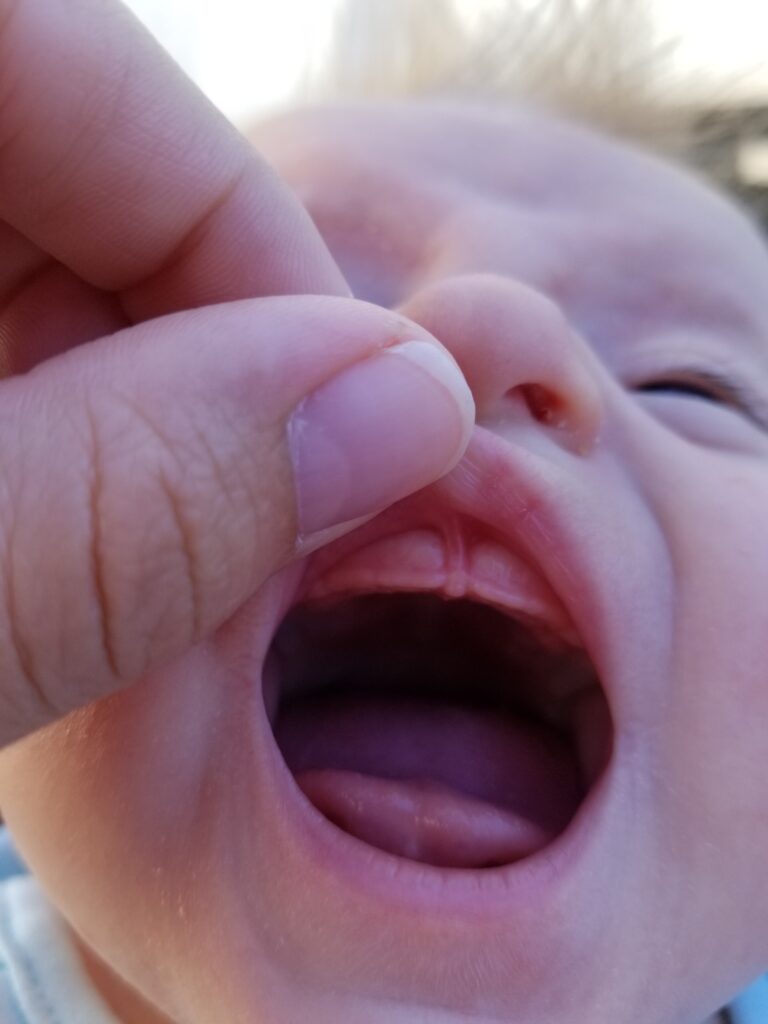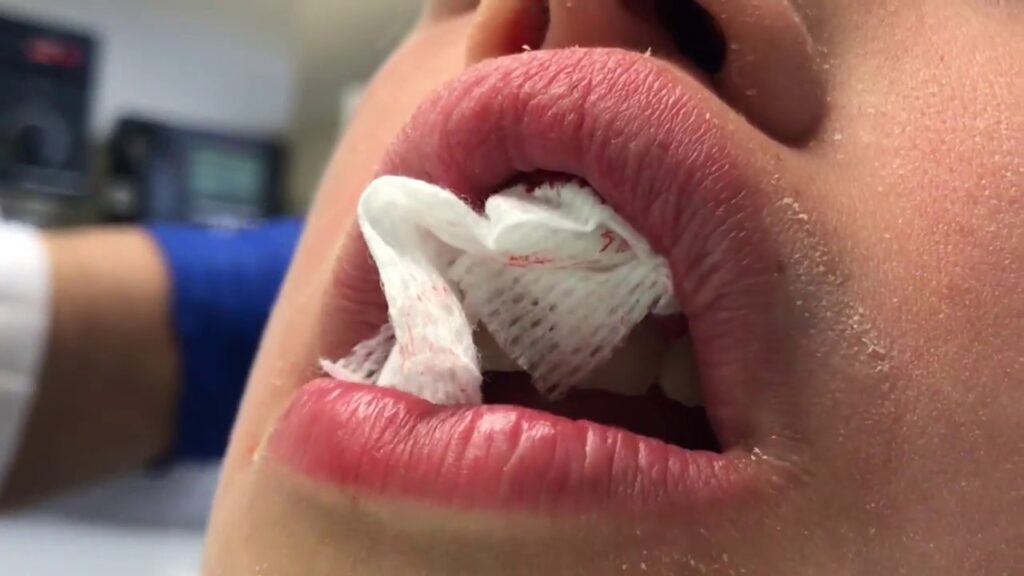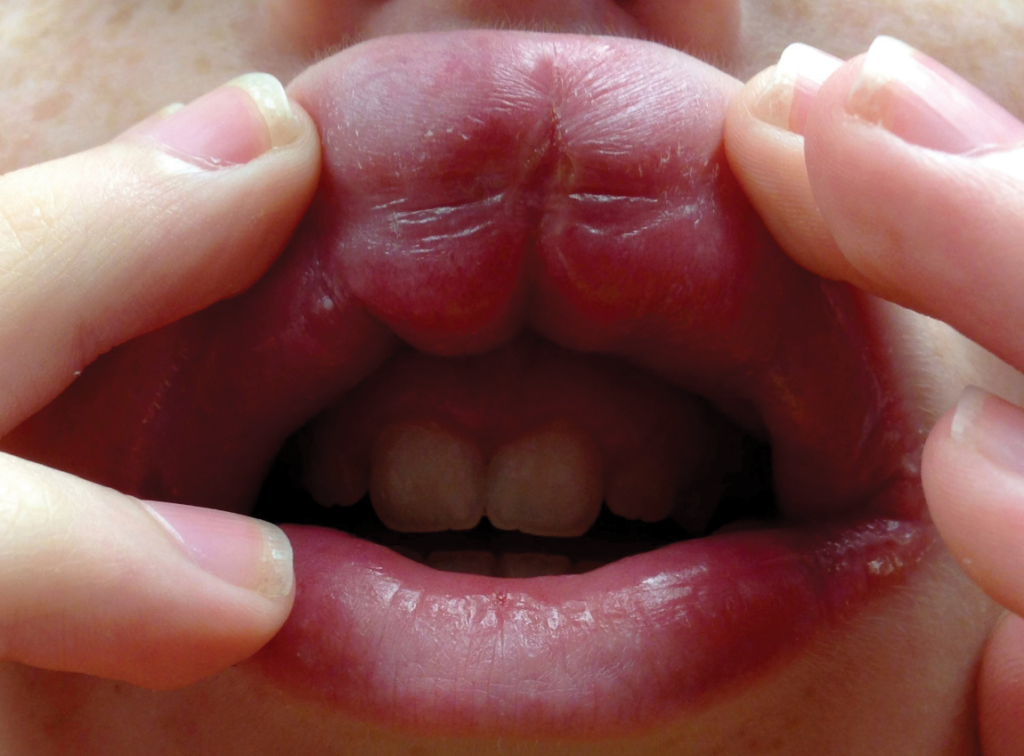What is a lip tie? Can a lip tie create problems later in adult life? Learn more about how you can be affected with a lip tie, what it involves, how to know if your newborns, toddlers or your child has this lip problem. This post also highlights treatments while citing expectations after treatment or what may happen if the problem is not corrected.
What is a lip tie- meaning of a lip tie
When do we say you are lip-tied or have a lip tie? Here is what you need to know about lip ties.
Every human being has a small usually thin tissue fold that allows for the upper lip or lower lip or tongue to fold and curl to a certain degree or level. This tissue is called the frenulum.
For instance, the upper lip frenulum or frenulum labii superioris can be felt by tongue tip when you contract your lip muscles while rolling the tongue over the upper gums.
Normally, the frenulum connects the central area inside upper lip, lower lip and underneath the tongue to the nearby mouth part. For instance, the upper lip frenulum attaches the center of upper lip to the upper gums.
However, due to problems in human anatomy, the frenulum can be tethered or remain tight to the upper or lower gums. In this case, the lips will curl but with so many restrictions or without much freedom. That is when we can say you have a tied lip.
Something noteworthy has to do with “how much” of the restriction in movement of the lips there is. Therefore, depending on where or how closely the lip frenulum is attached, there could be little or sometimes virtually no movement of the lips (more so the upper lip).
Lip tie in baby, toddler or newborns

How do you know your newborn baby has lip tie problems? Is it a real issue in toddlers and newborns?
Before breastfeeding, some parents may not be able to tell whether or not their newborns/toddlers have the normal frenulum.
Parents who have reported problems with feeding behavior of their babies have ended up learning that they have this problem.
Problems or symptoms of lip-tied babies
Can a baby’s lip tie a lifelong problem? The answer is yes! Lip ties can really cause problems to babies especially those who are still being breastfed. Depending on “class” of labial frenulum restriction, these are some of the challenges faced by the baby or the mother.
- The upper lip, in particular, does not curl or flare-up enough which leads to loss of suction while breastfeeding
- Tied lips can consequently result in prolonged feedings with potentially painful nipples as a result
- Decreased milk production hence babies end up little satisfied
- A noisier suckling
- In case of a lip injury, the frenulum can get hurt, or be traumatized
Lip-tied and tongue-tied problems in adults
If not treated, lip-tied individuals can face consequences in speech, breastfeeding, eating, oral hygiene or cosmetics (esthetics).
Lip tie release exercises
Although these are not proven to work for everyone, (especially toddlers or children) post-lip tie or tongue tie release exercises for adults include:
- Sticking the tongue out until you cannot sustain holding it
- Try reaching the nose or touching your nose with your own tongue
- Moving the tongue up and down or sideways while touching either mouth corners
If you cannot pronounce troublesome words after correction, seek further help from a therapist.
Statistically, upper lip ties are more than tongue and lower lip tie. Adults who suffer more are those who use dentures.
Upper lip tie release frenectomy & treatment risks

What can be done in case of an upper or lower tongue tie? We have some ideas on how lip-tied problems are treated plus treatment risks. We have also included a video clip showing a simple lip frenum release in babies.
What lip tie release involves
Lip tie release is a physical procedure done by a dentist to release the frenum and increase the lip movement for intended purposes.
- After examining the “class” of lip tie, the dentist may apply a suitable local anesthesia
- If the frenulum is thick, an injection can be required depending on the age of your child or baby
- Then clamping the frenum for about 15 seconds
- Thereafter, a laser beam suitable may be directed to the area or a pair of scissors can be used to free it
This procedure may not require any local anesthesia but some form of numbing the frenulum vessels is essential.
What to expect during lip release surgery
This treatment takes a few minutes for it to be done and completed. However, there is discomfort associated with it such as:
- (Very) little bleeding
- Swelling of the upper or lower lip which can go on for a few days
- Babies refusing to eat in a few hours after treatment
- Blood in diapers in case of toddlers swallowing the blood
- Whitish or yellowish appearance after a day or so which is an indication of healing
As mentioned, toddlers may become fussy. This should not be a great concern but you should find a way out. One of the things suggested is keeping your baby or toddler close to body temperature. Optionally, talk to your healthcare provider for proper medication to relieve of pain or swelling.
Parents are advised to consult more prior to this treatment in newborns. If your baby shows good sings, continue breastfeeding them to foster healing.
What parents should know after release

Ultimately, after the release of the frenulum improvements (in terms of breastfeeding) do not come almost immediately. Especially, if your toddler or baby had a tongue-tie release.
Be patient as your baby’s body finds a good adaptation ability and compensation from the muscles. These are the things that will contribute to regression in suckling or good progressive feeding.
Labial frenectomy or surgery for tied lips
Unlike lip release, a frenectomy is a surgical procedure that removes the tissue.
Most dentists who provide frenectomies use of laser therapies. The laser is a considerably better removal option due to its good results such as bloodless and painless operation. The bottom line is to ensure you have consulted as a parent.
Can lip-tied toddlers or babies undergo oral surgery to remove the frenulum? Reaching a decision for a frenectomy for infants depends on what the parent wants. At times future problems can overrule the rest.
However, below are some lip-tied symptoms and reasons why you would want your toddler (child) to get an upper lip frenectomy.
- Problems with teeth cleaning
- Playful or lip-injury prone children
- Problems with a speech at an early or tender age
Children who have grown permanent teeth can have frenectomy to rectify the frenum. Healing is also reportedly progressively promising.
Risks

Below are the potential risks of undergoing a lip-tied procedure.
- Injury (not only to the gums but the teeth or tongue)
- Surgery may compel one to get a repeat of lip surgery in case of lip tie speech problems after initial frenectomy
- Swelling or inflammation
- Sometimes scarring may occur but many people do not experience scarring after surgery (rare)
- Individuals new ways for adaptation for a positive stimulation useful in movement of lip or tongue muscles
- It can result to an eye damage due to the reason that some are intrigued by the laser beams
More importantly, if your child has had a frenectomy or surgery to remove the tongue tie, consider making visits to the doctor for further assessment. This is crucial in case there could be another possible operation when things don’t go that way or don’t have expected results.
Lip-tied concerns or problems later in life
Are there problems likely to occur later in life if you are born lip-tied or have a realized it lately? Besides the breastfeeding problems, other possible concerns include:
- Fear of having huge gaps left in between the upper or lower incisor teeth
- Potential dental decay even after milk teeth stage
- Problems in the proper articulation of speech sounds
- Some people become worried lip ties and tongue ties can have a negative impact as far as the lip esthetics are concerned
- The problem with tooth cleaning and keeping oral hygiene
- Occasional or repeated injuries can cause frenum trauma
- Periodontal infections
If you notice your baby’s gums recede or begin to form a frontal curve (or edge) while breastfeeding, talk to a dentist.
Mothers who are breastfeeding are encouraged to go for diagnosis in order to rule out whatever could be causing nipple pain. For instance, this would additionally help mums make the right decisions about their health statuses including thrush infection or mastitis or something else like a skin rash on their breasts.
Helpful remedies lip-tied after treatments
Research does not clearly state whether certain therapies are actually helpful after treatment such as frenectomy. These include stretch exercises and therapies.

